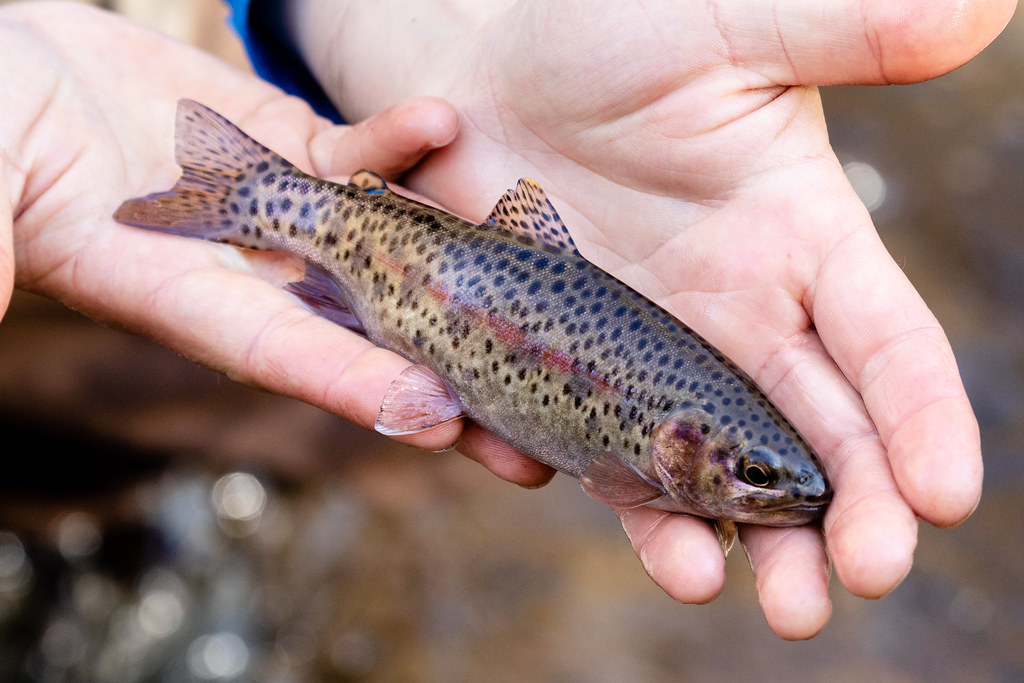Rainbow Trout
Oncorhynchus mykiss
Rainbow trout are common and widespread in most of the United States, but in certain regions are considered endagered due to pollution.
This section shows one large critter image at a time. Use the thumbnails that follow to select a specific image to display here.

This gallery contains a grid of small thumbnails. Selecting a thumbnail will change the main image in the preceding section.
Appearance
The rainbow trout is a large, torpedo shaped fish that usually reaches a weight of 8 pounds and a length of 20 to 30 inches in the wild. It is speckled with black spots on its bluish-green back, with a silver belly and a pink stripe on the sides of its body. The rainbow trout’s coloration often varies depending on age and habitat. In addition to their black speckles, young fish have 8 to 13 dark vertical spots on their sides, called parr marks, which fade as they grow older.
Feeding
The rainbow trout eats mostly invertebrate larvae, insects and fish. When feeding they can save energy by staying still in a stream with their mouth open, eating invertebrate larvae as it flows downstream.
Predators
The rainbow trout is prey for larger fish, fish eating birds, including herons and kingfishers, and mammals, including American Black bears, river otters, raccoons and humans. To avoid predators, this fish swims at high speeds and benefits from their silver belly and bluish-green back, which resemble the top of the water from below and the river bottom from above.
Reproduction and life cycle
Between March and July, rainbow trout will return to the stream in which they were born. Here, females will dig out a nest with their anal fin in a gravel bottomed pool. The female will dig several other nests in the same day, collectively called a redd.
During spawning, a male and female, parallel to each other, will release sperm and eggs into the nest at the same time. Eggs, surrounded in a cloud of sperm, become fertilized and develop into hatchlings over 3-4 weeks, protected by their mother. After eggs hatch, young fish stay in the nest for 2-3 more weeks, surviving on nutrients from a yolk sac until they emerge from the nest. Rainbow trout are able to spawn at age 3 and usually only spawn every 3-5 years.
Did you know?
- The rainbow trout is considered endangered in some regions by the United States Federal Government because they are largely affected by stream damming and sediment runoff.
- Rainbow trout living in fresh water habitats are often lighter in color than their counterparts in saltier waters.
- A group of rainbow trout is called a hover.
- The rainbow trout’s distinctive pink stripe is most pronounced on breeding males.
- If a rainbow trout migrates to the ocean in adulthood instead of staying in streams and rivers, it is called a steelhead.
Sources and additional information
- Animal Diversity Web: Oncorhynchus mykiss – University of Michigan Museum of Zoology
- Oncorhynchus mykiss – Encyclopedia of Life
- Rainbow Trout or Steelhead – National Wildlife Federation
- Rainbow Trout – National Park Service
